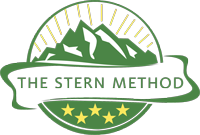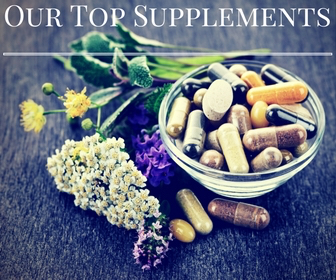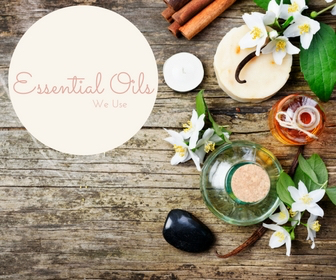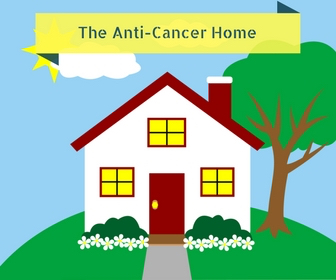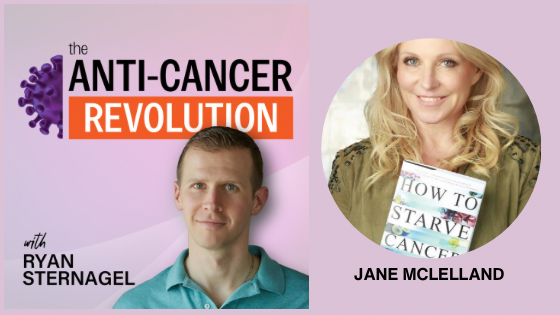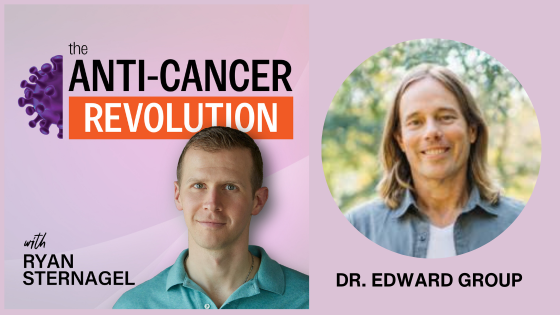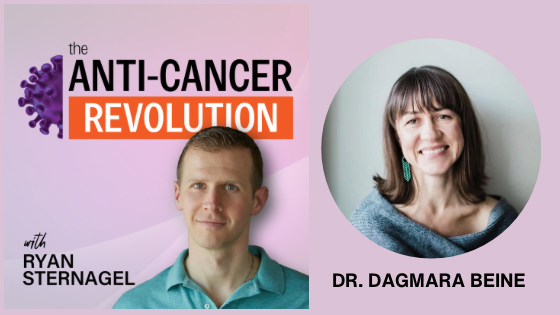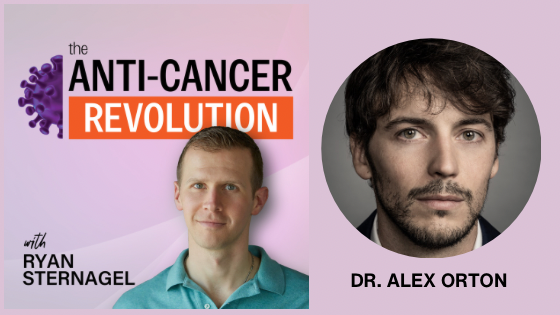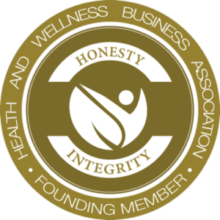A carcinogen is a substance that is known to cause cancer. Toxins are a broader term for all heavy metals and chemicals that will negatively impact health in one way or another (often cancer). If you find out your kid has cancer and you’re trying to heal it, or if you want your kids to grow up to be healthy in general, does it make sense to keep them swimming in a sea of toxins and carcinogens that are most likely counteracting the progress you’re making?
We had already come a long way in evaluating the items we used in day to day life and switching to safer products, but when our son was diagnosed with Stage IV Neuroblastoma, that process instantly went into warp drive. Even though we had already removed and replaced quite a few items over the past several months, when we went through the house with a take no prisoners approach, we still easily filled an entire garbage bag with toxic offenders.
Cancer diagnosis or not, this is something everybody really needs to do for themselves and their children. A common complaint we hear while pointing out all the products and practices friends and loved ones employ that are detrimental to their health is: “Yeah, I know, but it seems like EVERYTHING these days causes cancer, so what’s the point in trying to change anything?” Think about that for a second. That’s like being in a war zone and saying “Well ALL bullets seriously hurt or kill you, and they’re everywhere around here, so what’s the point in getting down every time I hear a gun shot?”
To expand on this a bit, it’s really just everything most people in this day and age ARE USED TO that causes cancer. There are plenty of suitable, and more often than not, more effective replacements with no objectionable ingredients for each and every item of concern. It just takes a little looking around. If you just stick with the notion that you will take a look at the ingredients in every single product you buy from here on out armed with a couple of tools I’ll give you in this article, your home will become a safe zone in an increasingly polluted world.
It is true there is more toxic garbage in our environment coming at us from every angle than ever before and it’s impossible to avoid everything all the time… But that’s even more reason to actively avoid as much of it as you can and regularly rid yourself of (in other words, detox) what you do pick up along the way. Our bodies all have a certain threshold of the toxic load they can bear before something goes seriously wrong, and it’s different for everybody. Or, if you or your child already have cancer, then adding more toxins to the situation (that, and eating sugar) is equivalent to throwing gasoline on a fire.
A fantastic documentary that really hammers in this reality is called [amazon text=The Human Experiment&localise=1&search_link=0&multi_cc=0&live=0&asin=B010RZZ3VS]. Seeing first hand every-day people that don’t by any means lead what most would consider to be unhealthy lifestyles have their blood tests come back off the charts for chemicals and heavy metals is eye opening to say the least. They show that even TOUCHING receipt paper can raise BPA in the body. I’m conscious of this every time I buy something, and if I worked at a register I would absolutely wear gloves.
Very sadly, most newborn or unborn babies that haven’t even had direct contact with the world yet, also test positive for all these nasty chemicals simply due to the high toxic load of almost every mother in America or most industrialized countries today for that matter. After watching this movie, and maybe rounding it out with [amazon text=Food, Inc.&localise=1&search_link=0&multi_cc=0&live=0&asin=B0027BOL4G] as well, it becomes a lot less of a mystery why cancer, adult cancer, and most all disease for that matter is rising exponentially. It certainly provides a much better explanation than the highly advanced (yes, that was sarcasm) “bad luck” theory you get from most MDs.
So all that being said, if you’ve never put much thought into this until now, you have a bit of work to do. Trust me though, it feels good once you’ve made the first pass, really good, and keeping up from then on just becomes more of a way of life than a chore. The thought of removing EVERYTHING from your life that might be toxic can be a little overwhelming at first, but once you break it down into categories, it’s not so bad. As we’ve devoted the past year of our lives to this, I’ll also give you some places to start, with products we use for ourselves.
A couple notes before we begin. When searching for replacements to household products, The Consumer Guides put out by The Environmental Working Group is an incredible resource. They have a massive database of products, giving each an overall ranking and even providing analysis for each individual ingredient. Most products you find on there can be easily bought online. I have to admit, I had forgotten about this site for quite some time before starting to write this article. We switched to safe products long ago, but some of them weren’t the safest of the safe. So I’ll point out my thought process in going through and rating what we currently use and seeing what might be better. We’re always trying out new, safe products, and whatever we currently feel is the best in a given category we will always try to post in our Anti-Cancer Life Resource Section. Also, if you have a health food store or even better a full blown organic / natural grocery store, the household products they stock are on average exponentially better than what you’ll find at regular grocery stores. I’m still sure to check the ingredients and compare between all similar products on the shelf when buying at these places though.
Let’s get to the lists: Baby Products
Might as well start with what’s closest to home. Once you really start to understand how detrimental all of these unnatural chemicals are to human health, looking closely at what’s in most products intended solely for babies is nothing short of horrifying and infuriating.
Baby Formula: We never had to look into this one too much ourselves as Ryder always breastfed (we instead were just paranoid about everything that went into Teddy). As I briefly look into what’s out there, I can instantly tell this needs to be an article all in its own. There’s a lot of conflicting information out there once you start digging into it. Even most of the higher end products have questionable or contested ingredients in them, and of course the mainstream brands appear to be ridden with GMOs and pesticides. For now, I can tell you to where to start. We would stay far away from anything with high fructose corn syrup and stay away from ingredients that aren’t nutrients of some type (just type the ingredient into a search engine to see what it is). Whatever we chose would certainly need to be organic, which means no chemical pesticides used and non-GMO, and ideally tested for heavy metals. You might have to make a few calls to manufacturers about that last one. Just searching “organic baby formula” on Amazon or a search engine will give you far better options right off the bat than anything you’ll find at the grocery store. Same goes for baby food. And come to think of it, anything we bought would most likely be a backup for a couple days if we didn’t have time to make it for ourselves. I just found a few recipes in our [amazon text=Nourishing Traditions&localise=1&search_link=0&multi_cc=0&live=0&asin=0967089735] book specifically for formula and baby food that provide all of baby’s essential nutrient needs. There is also a [amazon text=Nourishing Traditions Book of Baby and Childcare&localise=1&search_link=0&multi_cc=0&live=0&asin=0982338317] that would certainly be worth checking out.
Baby Soaps and Shampoos: Most everyone has probably heard once or twice that your skin is like a sponge and absorbs everything it comes into contact with. Well, it’s true. What’s more, hot water and steam act to open up pores allowing for easier transport into and out of the body. That’s why food grade hydrogen peroxide and detox baths as well as ozone saunas are so effective at getting good stuff in and bad stuff out of the body. Now keep that in mind when you look at all of the ungodly chemicals that are in most products off the shelf intended to be slathered onto your child. Let’s take a look at some of the more offensive ingredients in a household name baby soap: fragrance, propylparaben, PEG-80 sorbitan laurate, cocamidopropyl betaine, methylparaben, phenoxyethanol, laureth-4, tocopheryl acetate. Sounds like great stuff to rub all over your kid every day, right? Why would they use all of these insane chemicals to rub on children you ask? Because they’re cheap! These things cost literally pennies and they give you the FEELING you’re cleaning your kid, so why not? We haven’t settled on one brand in particular for Ryder but we of course always look for all organic ingredients that we understand whenever picking something out. For the next soap we try, I’m going back and forth between something from [amazon text=Badger&localise=1&search_link=0&multi_cc=0&live=0&asin=B0054ATX18] (because I use a couple of their products for myself) or Chagrin Valley. Just for kicks, let’s compare the ingredients of that first one I mentioned with that of the Goat Milk Honey Oatmeal Soap from Chagrin Valley: Organic Sunflower Oil; Organic Coconut Oil; Organic Sustainable Palm Oil; Organic Extra Virgin Olive Oil; Goat Milk; Organic Virgin Shea Butter; Sodium Hydroxide*; Organic Cocoa Butter; Water; Organic Canola Oil; Organic Castor Oil; Organic Oatmeal; Organic Honey; Organic Cornstarch. *Used during the Saponification Process to turn oil into soap. None remains in the finished product. Notice a difference?
Diapers and Baby Wipes: There’s no need to have chlorine, perfume or any other chemicals in your baby’s diaper. If you look around on the internet, you can find some pretty nasty pictures of chemical burns that are claimed to have resulted from regular diapers. Even though we try to go “all the way” with just about everything related to health and natural living these days, which in this case would be organic cotton cloth diapers, we haven’t gone there with this one. The problem is that natural brand baby diapers are pretty darn expensive, especially considering the amount of liquids Ryder gets every day! If we’re feeling flush, [amazon text=Bamboo Nature&localise=1&search_link=0&multi_cc=0&live=0&asin=B00EKRCIIQ] seems to be the consensus out there for safest (and most biodegradable) diaper. [amazon text=Earth’s Best&localise=1&search_link=0&multi_cc=0&live=0&asin=B00T4JTXQK] is also fairly highly regarded, and is a little more common to see in stores. Lastly, I hesitated to even include this but in the spirit of telling you everything I know, if you’re looking to save money here or there Target’s Up and Up brand diapers actually score the same as [amazon text=Seventh Generation&localise=1&search_link=0&multi_cc=0&live=0&asin=B008CO60M8] brand on a couple diaper review pages for safety. They use an ECF fluff which prevents dioxins, and are chlorine and perfume free. They do not, however, list out other chemicals that are definitely NOT in their diapers as [amazon text=Bamboo Nature&localise=1&search_link=0&multi_cc=0&live=0&asin=B00EKRCIIQ] does. For baby wipes, we had been getting [amazon text=Earth’s Best&localise=1&search_link=0&multi_cc=0&live=0&asin=B004X8G57W] brand and really like their performance, but I just realized in writing this article EWG actually ranks wipes as well (not diapers though). They rank a two which is still extremely low concern, but might as well go all the way right? We’ll try this [amazon text=WaterWipes&localise=1&search_link=0&multi_cc=0&live=0&asin=B008KJQMA0] product that got a zero next and see how they do!
Diaper Rash Cream: Again, you have the choice here between mother-nature or a bunch of chemicals clearing up that red spot in your child’s most sensitive areas, and as usual mother-nature tends to do a better job. We’ve been fortunate and haven’t needed much so I haven’t had a chance to thoroughly compare all the choices out there, but whenever we do need some I always use the same principles I use when choosing any personal care product. Look for mostly or all organic ingredients, look up any ingredient that I’m unsure of (right there on my smart phone if I’m at the store), and pass if it turns out to be anything other than a plant extract of some kind. Again, EWG gives an easy cheat sheet here.
Baby Bottles: The damage BPA has done to humanity is enough subject matter for its own article, but for now, just know that it’s really bad. Even BPA free plastic bottles can’t be trusted, as other chemicals that are just as bad in some cases can still leach into the liquid. Glass is the only thing you can really be sure about. It’s great because you can put anything in it you want, throwing it in the dishwasher afterwards, and know that it’s not going to retain any smell whatsoever. While they seem to be a bit expensive for what they are, [amazon text=LifeFactory bottles&localise=1&search_link=0&multi_cc=0&live=0&asin=B004A2ZCA2] are the only good glass baby bottles we’ve found so far. Since they’re something we use all day every day and last forever, it’s easy to feel good about spending the extra money up front. Between the thick glass and the nice rubber shell, they are surprisingly durable and (knock on wood) but we have never had one break…and it’s not from a lack of dropping them! We use the adult version [amazon text=ourselves&localise=1&search_link=0&multi_cc=0&live=0&asin=B0070TZ7MA].
Crib Mattresses: Something you wouldn’t really think of right off the bat, but a regular crib mattress has the potential to be a terrible toxic offender. By law, crib mattresses (and regular mattresses) are required to pass intense flame resistance tests. For most manufacturers, this means coating them with heavy doses of chemical flame retardants. The mattress filling itself most often contains harmful petroleum based chemicals as well. The problem is these chemicals then off-gas when you bring them home, meaning they are released into the air. So in this situation a child is literally breathing in chemicals the whole time they are in their crib, not to mention absorbing them through their skin. Since we knew our son was going to spend over half his time in his crib, this is something we took very seriously. We got the [amazon text=Naturepedic&localise=1&search_link=0&multi_cc=0&live=0&asin=B001W2YCG8] brand because they use 100% organic cotton filling and materials that are able to pass the flame tests without the use of dangerous chemicals. And again as we knew he was going to be spending a lot of time on this thing and it seemed a waste to get this fancy mattress and then put questionable sheets on top of it, we also got [amazon text=organic cotton crib sheets&localise=1&search_link=0&multi_cc=0&live=0&asin=B005F55O0G].
Pajamas & Sleep Sacks: Same deal. The same flammability laws apply to these as well. Reason being a child could catch a loose fitting cuff on a candle (because so many of our children are sleeping by candlelight these days?). The workaround for PJs is to get tight fitting ones (again, so your kid won’t catch his cuff on all those open flames in his room) or those made of a naturally flame resistant material such as wool. This goes for sleep sacks and blankets as well, they need to be made of a naturally flame resistant material to avoid the chemicals. The nice part about wool is that it’s super warm in colder months and stays relatively cool in the warmer months. We really like [amazon text=this one&localise=1&search_link=0&multi_cc=0&live=0&asin=B00643DUCC] by [amazon text=Snugbags&localise=1&search_link=0&multi_cc=0&live=0&asin=B00643DUCC] in particular. As an added bonus, you can unsnap the arm holes to make them really wide. This proved to be incredibly useful in getting access to our son’s feeding tube in the middle of the night to pump all sorts of good stuff into him even while he was sleeping with no disturbance. Our backup sack had much smaller arm holes and I would wake him up all the time trying to get at the tube whenever we had to use it.
